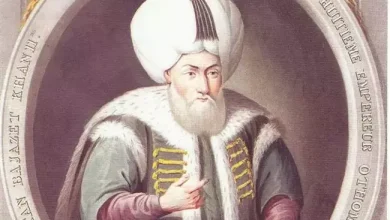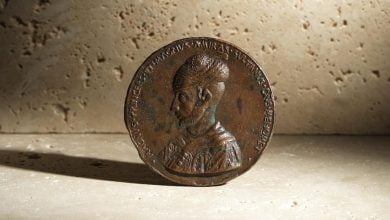Belgin Simsek to Play Gonca Hatun

Belgin Simsek to Play Gonca Hatun in Kurulus Osman Season 5.
————————————————————————————-
Baklava, the sweet pastry known for its flaky layers, rich fillings, and a honeyed syrup that glistens like liquid gold, has captured the hearts and palates of people around the world. While it is savored in many countries across the Middle East, the Balkans, and the Mediterranean, Turkish baklava holds a special place in the history of this delectable dessert. In this exploration, we will embark on a delightful journey to unravel the layers of tradition, taste, and craftsmanship that make Turkish baklava a true culinary masterpiece.
1. A Historical Confection: Origins and Evolution
The origins of baklava are the subject of much debate, with various countries in the region claiming to be the birthplace of this sweet delicacy. While the precise beginnings remain shrouded in mystery, it is widely accepted that baklava has ancient roots dating back to the civilizations of the Middle East and Mediterranean.
The name “baklava” itself is thought to have derived from the Mongolian word “baqlawa,” meaning “to tie, wrap up, or pack.” This etymology suggests that the layered pastry was influenced by the Mongol invasions and their culinary traditions.
Over the centuries, baklava evolved as it traveled along the trade routes of the Silk Road, taking on different forms and ingredients as it passed through various regions. By the time it reached the Ottoman Empire, it had become a refined and celebrated dessert, closely associated with the rich traditions of Turkish cuisine.
2. The Art of Baklava Making: Craftsmanship and Technique
Creating the perfect batch of Turkish baklava is a labor-intensive process that demands precision, skill, and patience. The key ingredients include thin layers of phyllo pastry, butter, finely ground nuts (typically pistachios, walnuts, or almonds), sugar, and a fragrant sugar syrup flavored with lemon juice or orange blossom water.
The process typically involves the following steps:
2.1. Preparing the Phyllo Dough: The dough is made by mixing flour, water, and a small amount of vinegar to achieve the desired texture. The dough is then kneaded and divided into small balls, which are left to rest for several hours. When ready, each ball is rolled out into paper-thin sheets, a task that requires great dexterity and experience.
2.2. Layering the Sheets: One of the defining characteristics of baklava is its many layers of delicate phyllo pastry. Each layer is brushed with melted butter to create that perfect flakiness. The number of layers can vary, but a traditional baklava may have as many as 40 sheets.
2.3. Adding the Nut Filling: After several layers of phyllo, a generous layer of finely ground nuts mixed with sugar is spread evenly across the surface. The type of nuts used can vary, but pistachios are a favorite choice in Turkish baklava, known for their vibrant green color and distinct flavor.
2.4. More Layers and Final Baking: This layering process is repeated, with butter and additional nuts added between each layer. Once the desired height is reached, the baklava is cut into diamond or square shapes. It is then baked until it turns a beautiful golden brown, allowing the layers to crisp and the nuts to roast.
2.5. Sweet Syrup Soaking: After baking, the baklava is immediately drenched in a hot sugar syrup, which seeps into every layer, infusing it with sweetness and moisture. The syrup is typically flavored with a touch of lemon juice or aromatic orange blossom water, adding a fragrant and floral note to the dessert.
3. Regional Variations: A Culinary Tapestry
Turkey’s diverse geography and cultural heritage have given rise to various regional variations of baklava, each with its own unique twist on the classic recipe.
3.1. Gaziantep Baklava: Hailing from the southeastern city of Gaziantep, this version of baklava is renowned for its use of top-quality Antep pistachios. The city’s fertile soil and ideal climate produce pistachios with a distinct flavor and vibrant green color. Gaziantep baklava is often recognized for its fine layers and a perfect balance between sweetness and nuttiness.
3.2. Antakya Baklava: Antakya, situated in the Hatay region near the Mediterranean, is known for its baklava filled with a mixture of walnuts and sugar. What sets Antakya baklava apart is its distinctive diamond shape and the use of clarified butter (samna) in the recipe, which lends it a rich, buttery flavor.
3.3. Yufka Baklava: In some regions, yufka, a thicker and heartier dough compared to traditional phyllo, is used to make baklava. This results in a heartier, more rustic baklava that is favored in places like the Black Sea region.
4. Celebratory Treats: Baklava in Turkish Culture
Baklava holds a special place in Turkish culture and is often associated with celebrations and special occasions. It is customary to serve baklava to guests during festive gatherings, religious holidays, and family celebrations, such as weddings and births. The intricate preparation and layers of flavor make it a symbol of hospitality and generosity.
During the holy month of Ramadan, baklava is a popular treat to break the day’s fast. It is also a cherished gift to bring when visiting friends or family. Similarly, during Eid al-Fitr, the festival marking the end of Ramadan, boxes of baklava are exchanged as tokens of goodwill.
5. The Global Appeal of Turkish Baklava
In recent years, Turkish baklava has gained international recognition and popularity, finding its way onto dessert menus in restaurants and bakeries around the world. Its allure lies not only in its exquisite taste but also in its visual appeal, with its shimmering layers and finely chopped nuts.
Turkish baklava has found its way into the hearts and homes of people from various cultural backgrounds. Its versatility and adaptability have allowed it to be integrated into a wide range of culinary traditions. Whether served in a traditional Turkish tea house, a Middle Eastern bakery, or a high-end restaurant, baklava continues to delight dessert enthusiasts worldwide.
6. Conclusion: A Sweet Symphony of Tradition and Taste
Turkish baklava is more than just a dessert; it is a symbol of heritage, craftsmanship, and the joy of sharing. Its delicate layers and rich, nutty fillings tell the story of centuries of culinary refinement in the heart of Anatolia. With each bite, one can taste the sweetness of tradition and the dedication of artisans who have perfected this delightful confection over generations.





